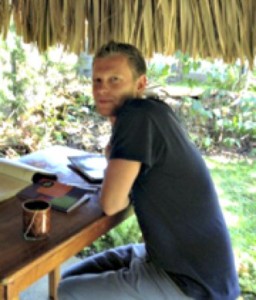By Seth Lenaerts
Before taking the plunge into graduate school, I worked as a Project Manager for Devils Lake Water Improvement District in Lincoln City, Ore. Project managing then seemed rather straight forward. First, the District Board set policy. Then my District Manager and I developed projects to implement the policy.
Evaluation of how I was doing as a project manager was straightforward too. Was I meeting the objectives, solving the problems that we identified, and doing so within budget? Don’t get me wrong, it was difficult, and I wasn’t always successful, but the goals of the program and how to evaluate it were clear.
When I began working on my Community Planning Workshop (CPW) team, I was excited about the prospect of letting someone else do the project managing so I could focus on the project. I was also looking forward to learning skills from the project manager that I could use when I began leading teams again. However, I quickly realized that the real challenge for CPW managers isn’t necessarily managing their projects, it is managing their teams!
CPW Project Managers face the complicated balancing act of meeting their project goal, while providing opportunities for each student team members to meet their professional goals. This was a unique concept to me. After reflecting on this question during winter term I’ve come up with three routine practices that project mangers can do to achieve both: (1) Limit surprises through clear communication/expectations, (2) Ensure your group truly understands the project, (3) Find ways to keep the project fresh, and minds stimulated.
To me limiting surprises means a thorough orientation to CPW protocols. This can be done by taking extra time at the kickoff of the project to baby step your group through the administrative workings of CPW. Hopefully this will help your team focus on the project related challenges as opposed to administrative tasks.
Second, is making sure your team really understand the project. A mantra of CPW is the project doesn’t matter as much as the process. To me “process” means, identify the problem, come up with possible solutions, select the most viable solution, implement, and evaluate. Team members have a number of assignments throughout the term, as the project manager it is important to demonstrate the connection between the assignment, the process, and the project.
Lastly, is stimulating the brain. A comment I have heard from my colleagues is they are so busy producing content, they don’t critically think anymore. That is a real concern! For me problem solving based discussion is the most important part of the process. Therefore, project managers should seek to create time explicitly for critical thinking activities and discussion.
As our team hits the mid point of this experience, I’ve taken time to think about how these practices can be applied to the second half of the CPW project. However, it quickly become obvious that limiting surprises, understanding the project, and stimulating conversation can be applied to any project, not just CPW. I look forward to incorporating these practices into my future management style.
Seth Lenaerts is a student in the University of Oregon’s Community and Regional Planning Program.


